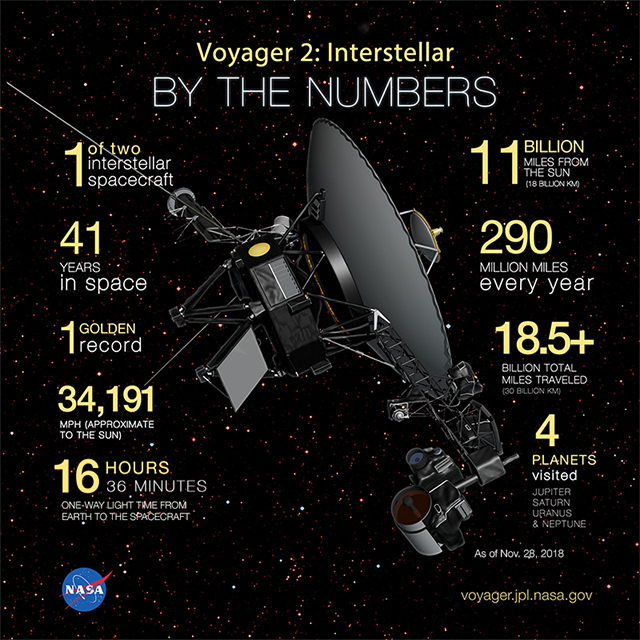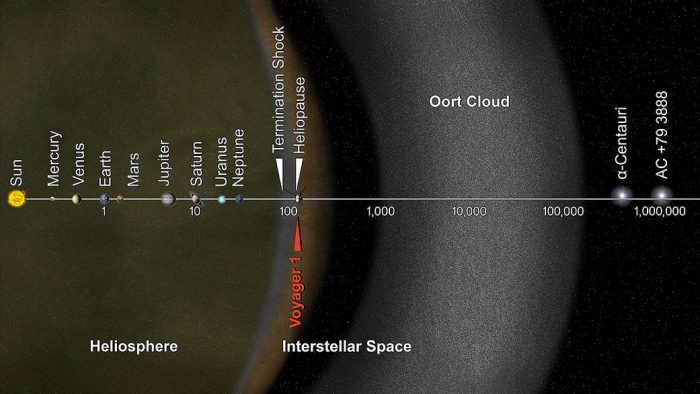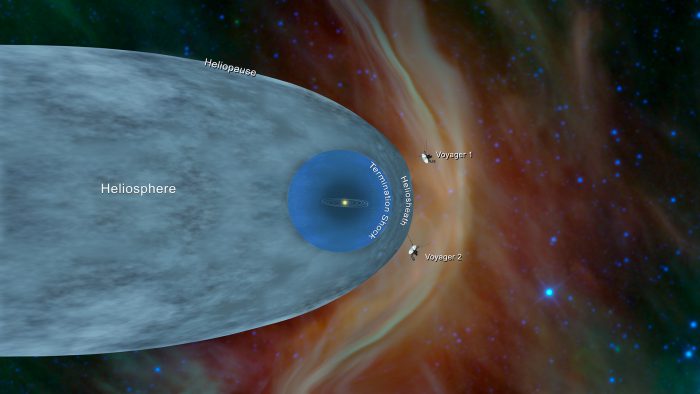Today, NASA is going to celebrate a very exciting event. Voyager 2—one of a pair of ground-breaking space probes—has officially left the heliosphere, which is the limit of solar winds pushed out by our Sun.
It is now in what we call interstellar space.
Its sibling, Voyager 1, was the first and only other human-made craft to do this. It left the Sun's grasp in 2012.
To put this achievement in context, we think that it might be helpful to look at a few numbers, courtesy of NASA ...

(NASA)
As you can see, it has been quite a journey!
First contact
The two Voyager spacecrafts were launched in 1977— that's 41 years ago!
Voyager 2 was actually launched first of the two, on August 20, 1977. (Voyager 1 left 16 days later.) But Voyager 2 left the heliosphere a full six years later. How come? Because of the path that it took, known as The Grand Tour.
This probe was chosen by scientists to be the first spacecraft to fly past all four of the gas giant planets—Jupiter, Saturn, Uranus, and Neptune. It also gave us our first up-close look at the many moons that surrounded them, such as Io, Titan, and Europa.
Since then, probes like Juno and Cassini have given us a more specialized look at Jupiter and Saturn and their moons. But Voyager 2 was still the first contact that we ever had. And it changed everything about how we view our solar neighbourhood.
Still trucking

The Voyager crafts are still technically in our solar system. Next up? The Oort Cloud! (NASA/JPL-Caltech)
For the time being, everything is still full speed ahead for both Voyager crafts. Though it is beyond the heliosphere and in interstellar space, it is still technically in our solar system. This is the magical area where the Sun's gravity and the rest of the galaxy mix. In fact, in about 300 years (oh, is that all?) it will enter The Oort Cloud—the collection of comets and small objects that scientists believe is the very limit of objects caught in the Sun's gravity.
And eventually, the nuclear fuel on these crafts will run out and they will simply drift through cold space. But until that day, they will still be there for us, transmitting information back to scientists on Earth about what's well beyond the warmth of the Sun.
Celebrate this achievement in the video below.
 It was confirmed that Voyager 2 crossed the heliopause on November 5. (NASA-JPL-Caltech)
It was confirmed that Voyager 2 crossed the heliopause on November 5. (NASA-JPL-Caltech)









